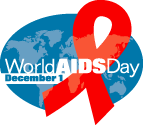 When Charlie Sheen announced a couple weeks ago that he was “in fact HIV positive”, all I could think was, this is needed publicity for HIV. We have known about HIV for over 3 decades and there have been enormous advances in it’s management. However there is still so much stigma associated with the infection. Sheen himself spoke of being the victim of extortion in an effort to keep is diagnosis private. I don’t mean to be insensitive in saying that Sheen’s “coming out” is good for HIV awareness. Of course, it is not a good thing for anyone to have any sort of health problem, much less a chronic infection. Awareness and education are needed for de-stigmatization of HIV; this can ultimately result in achievement of the goal “getting to zero; end AIDS by 2030.”
When Charlie Sheen announced a couple weeks ago that he was “in fact HIV positive”, all I could think was, this is needed publicity for HIV. We have known about HIV for over 3 decades and there have been enormous advances in it’s management. However there is still so much stigma associated with the infection. Sheen himself spoke of being the victim of extortion in an effort to keep is diagnosis private. I don’t mean to be insensitive in saying that Sheen’s “coming out” is good for HIV awareness. Of course, it is not a good thing for anyone to have any sort of health problem, much less a chronic infection. Awareness and education are needed for de-stigmatization of HIV; this can ultimately result in achievement of the goal “getting to zero; end AIDS by 2030.”
In recognition of World AIDS Day 2015, today’s post is a “101” about HIV and AIDS – basic facts you should all be aware of.
Most (if not all) people by now would have heard the two acronyms ‘HIV’ and ‘AIDS’. In fact the acronyms are used interchangeably and frequently together, as in ‘HIV/AIDS’ resulting in the confusion of many people as to the difference between the two.
HIV, or human immunodeficiency virus, is a virus transmitted by contact with the body fluids of an infected person, including blood and genital secretions. It is not transmitted by contact with sweat, saliva, tears, urine, or stool. With improved screening of blood products, blood transfusion is today a rare cause of HIV infection (essentially unheard of in developed countries). Intravenous drug use remains a significant risk factor for infection however overall, sexual activity accounts for the majority of HIV infections. Children born to mothers with untreated HIV infection are also at risk for acquiring the virus.
When we speak about sexual activity and HIV risk, it is interesting to note that the risk varies depending on the type of sexual activity. Male to male sexual intercourse is associated with the highest risk of HIV acquisition, that is, up to 2% per sexual encounter with an HIV positive man, giving rise to the high incidence of HIV in men who have sex with men (MSM). Risk of infection from male to female approaches 0.2%, and from female to male 0.14%. Thus in heterosexual relationships, it is easier for a woman to contract HIV infection than for a man. Of note, the risk of HIV infection increases further, in the presence of other sexually transmitted infections since ulcers (such as from herpes or syphilis) or inflamed tissues (such as from gonorrhea or chlamydia) make it easier for the HIV virus to pass through and into the blood stream.
After HIV is acquired, the virus infects a particular cell known simply as the ‘T cell’ which is responsible for a strong immune system. In healthy persons, the total count of this cell numbers more than 1200. However with HIV infection, the numbers of this cell decline over time. In an untreated person, the rate of decline in the T-cell count is variable and it can take as long as 15 years or as short as 2 years to drop to a level which is so low (usually less than 200), that the body is not able to fight simple infections. At this point, the HIV infected individual has acquired immunodeficiency syndrome, or AIDS.
A fact that many people find surprising is that the period between HIV infection and the development of AIDS is mostly asymptomatic. That means, a person who is HIV positive will look normal and can therefore unknowingly transmit the virus to others during the many years it takes before becoming ill with AIDS. It is for this reason that routine HIV testing is recommended for all persons who have ever engaged in sexual activity.
Apart from curtailing it’s spread, a big reason for persons to get tested for HIV is so that they can be diagnosed soon after being infected. This allows them to be immediately started on antiviral medication to ensure that their immune system does not ever weaken to the point of developing AIDS. Persons who start therapy for HIV infection relatively early, will have a life expectancy that approaches normal. This is in contrast to those who start treatment at the stage of a very weakened immune system. At this point, although strengthening of the immune system is expected, the risk of complications and death is higher.
The outlook for HIV infected persons in this 21st century is excellent, given the fact that potent medications are available with covenient dosing schedules (as little as one pill once per day) and with minimal to no side effects. HIV positive persons are now able to fulfill normal, productive lives, including getting married and having children under the guidance of their physicians. This positive outlook should be motivation to get tested for HIV and seek care accordingly. As summed up in this year’s theme – World AIDS 2015: The Time To Act is Now.
Leave a Reply